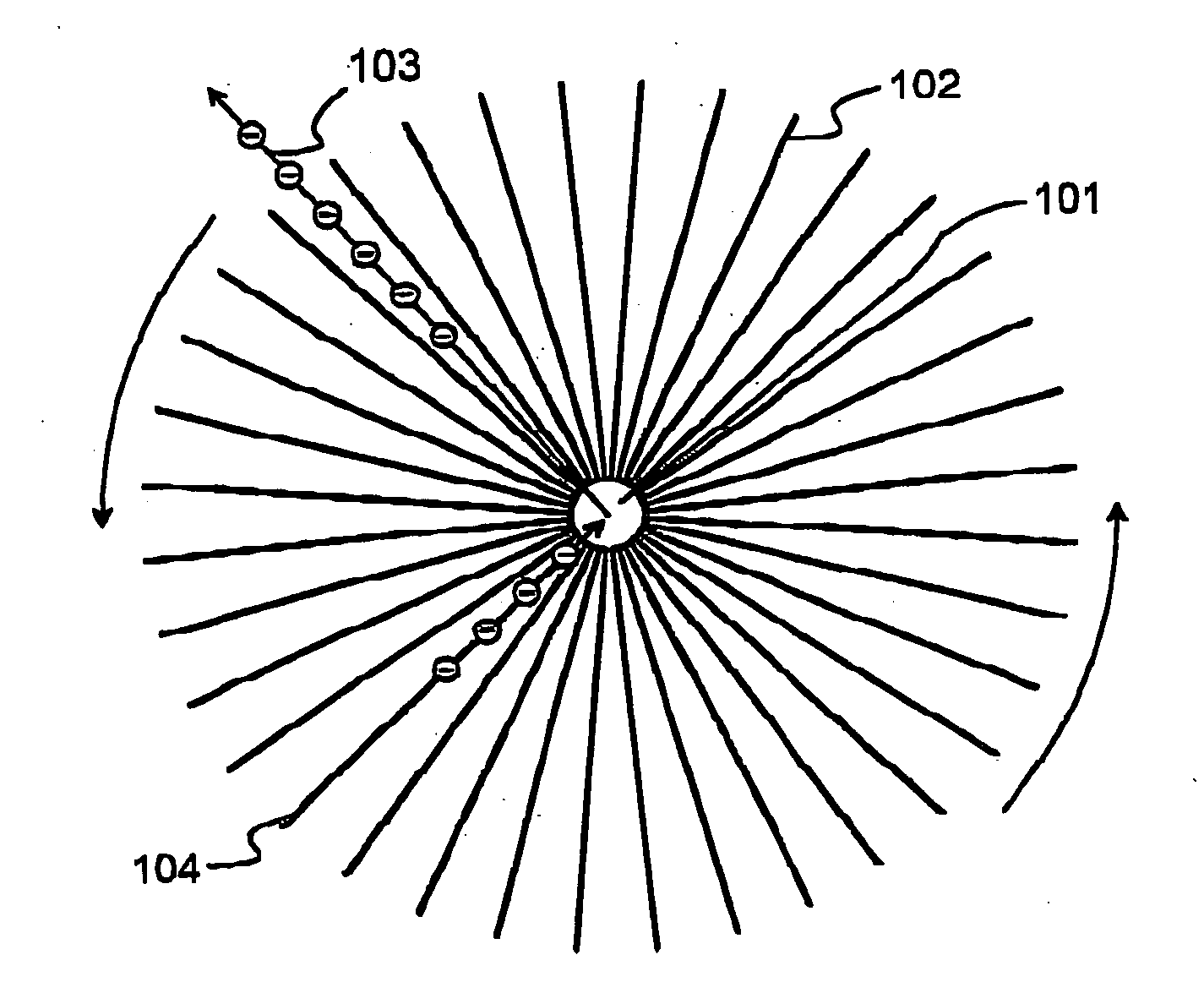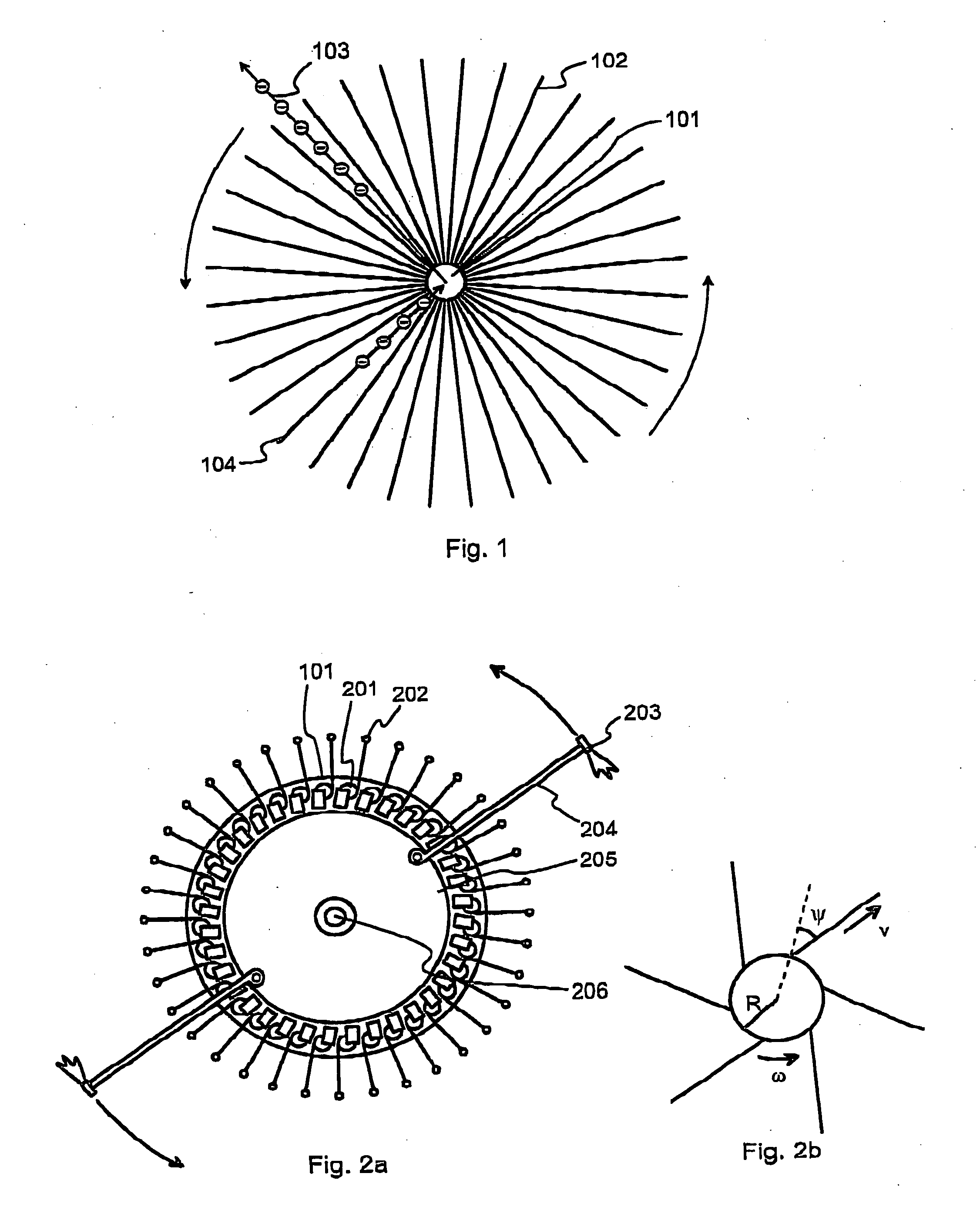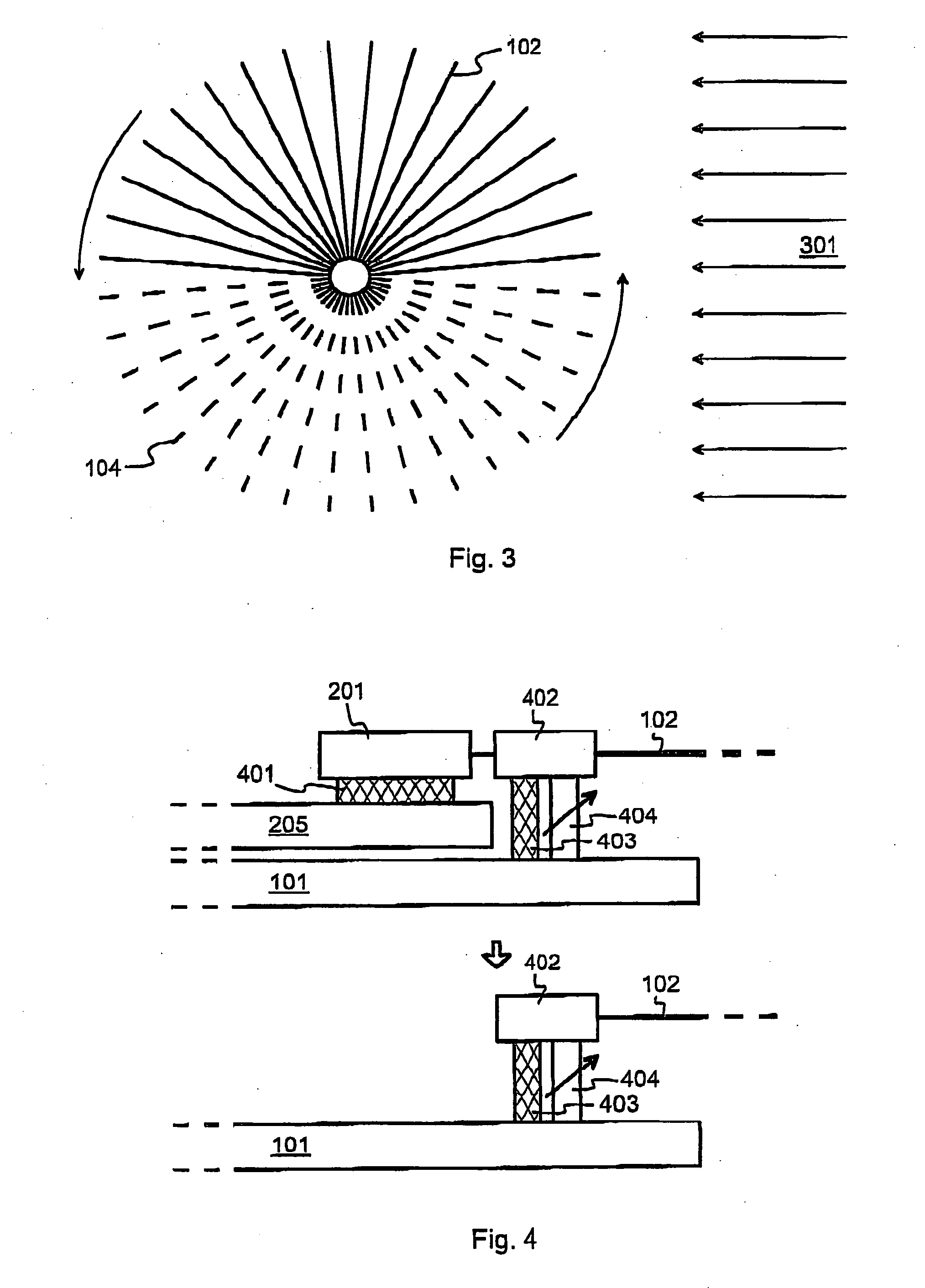Electric sail for producing spacecraft propulsion
- Summary
- Abstract
- Description
- Claims
- Application Information
AI Technical Summary
Benefits of technology
Problems solved by technology
Method used
Image
Examples
Embodiment Construction
Principal Configuration
[0032]FIG. 1 illustrates schematically the basic principle of an electric sail that consists purely of radially extending wires, with no perimeter connection or other interconnections between the wires. In the middle there is the main body 101 of the spacecraft. Extending radially outwards from the main body 101, there are a number of wires, of which wire 102 is an example. The whole system rotates (spins) around a rotational axis that is perpendicular to the plane of the paper and goes through the contra of gravity of the system, which we assume to coincide with the center of the main body 101. The system is in a space environment, which means that there is essentially no similar drag caused by any surrounding medium as for example in the Earth's atmosphere. On the other hand, since each noncentrally located piece of a system rotating at constant angular velocity requires a constant centripetal force to keep It on its circular orbit, the result of the spinn...
PUM
 Login to View More
Login to View More Abstract
Description
Claims
Application Information
 Login to View More
Login to View More - R&D
- Intellectual Property
- Life Sciences
- Materials
- Tech Scout
- Unparalleled Data Quality
- Higher Quality Content
- 60% Fewer Hallucinations
Browse by: Latest US Patents, China's latest patents, Technical Efficacy Thesaurus, Application Domain, Technology Topic, Popular Technical Reports.
© 2025 PatSnap. All rights reserved.Legal|Privacy policy|Modern Slavery Act Transparency Statement|Sitemap|About US| Contact US: help@patsnap.com



